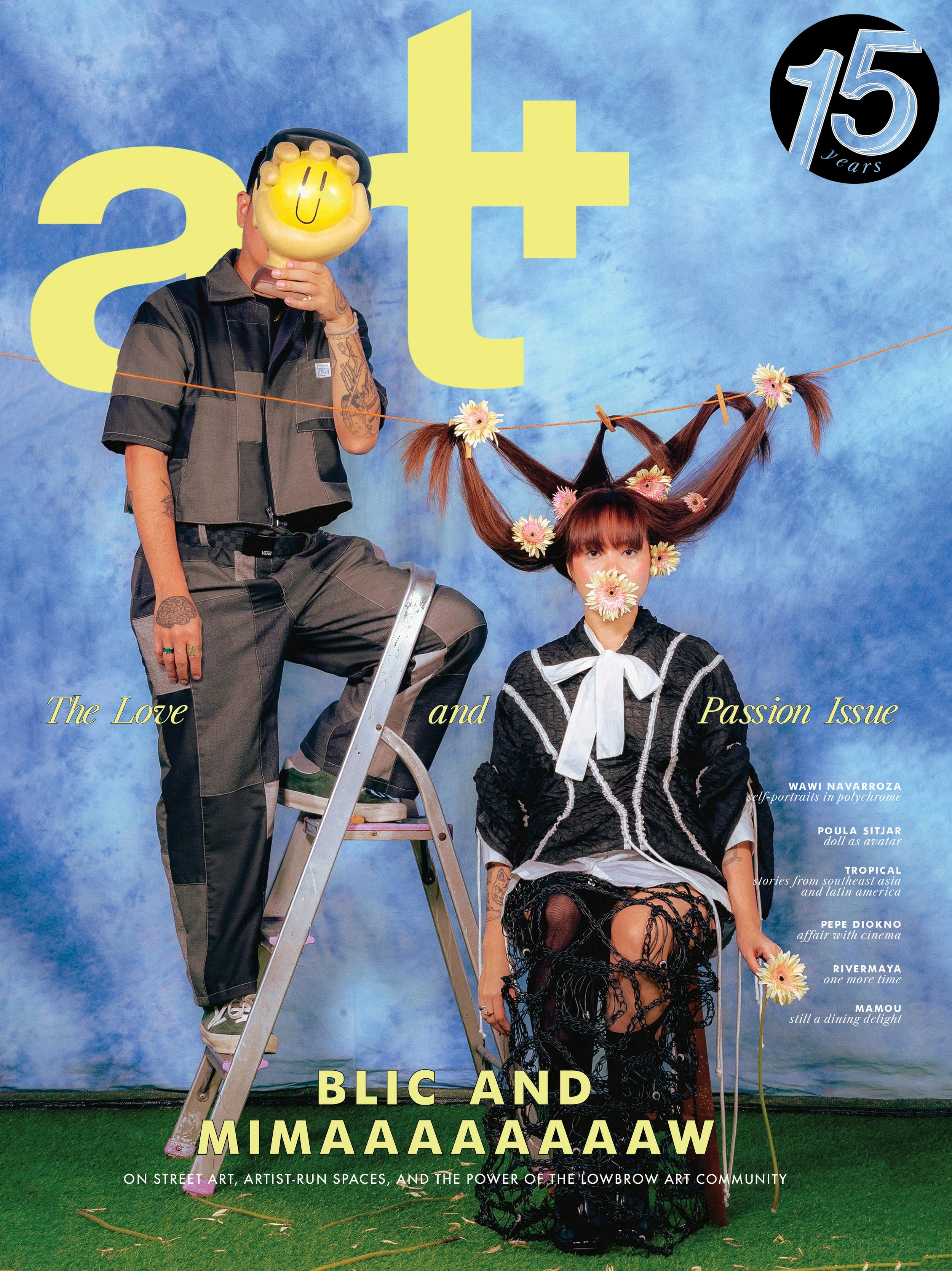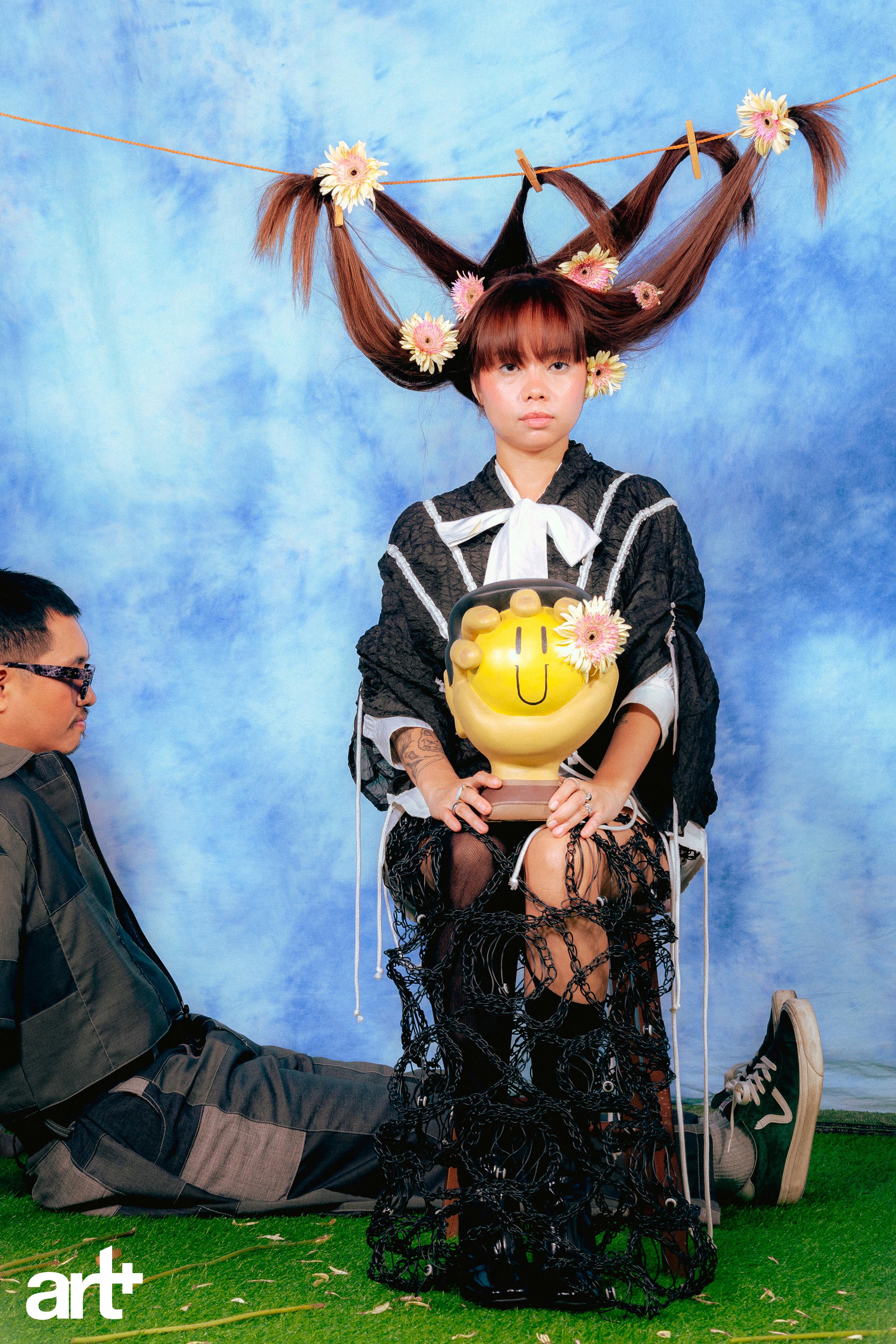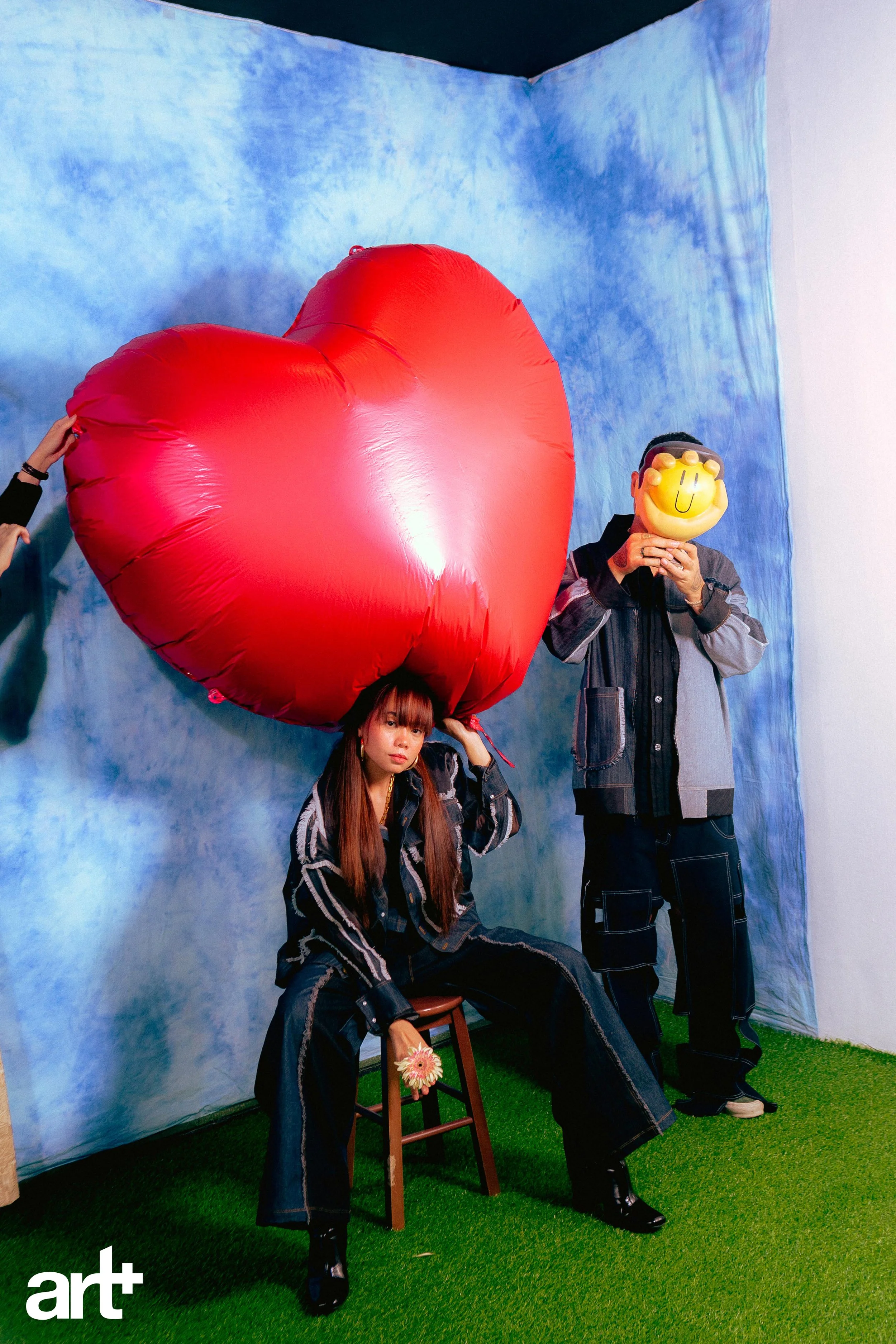On the Fringe
Artists Blic and Mimaaaaaaaaw talk street art, artist-run spaces, and the power of the lowbrow art community.
Words Mara Fabella
Photography Jovel Lorenzo
This is an excerpt from Art+ Magazine Issue 89. To read the full story, get the latest issue available on collectibles by artplus, Shopee, and on select stores of National Bookstore and Fully Booked.
Painter and cartoonist Robert Williams was the first to coin the term “lowbrow art.” In an art world steeped in exclusivity, it was an act of rebellion against institutional perspectives of what “high” or “low” art was, and ultimately what art should be. The lowbrow movement celebrated the kitsch, the fringe, the underground. Drawing from the aesthetics and ideas of comics, pop culture, and more personally driven visuals, artists like Williams relished in the irreverent freedom carved out by their works, unobscured by the fog of intellectualism. To them, there was no idea too taboo or no norm too sacred—only blank surfaces and a hunger to create.
Lowbrow art has grown from a niche movement to one of the more dominant artistic forces in contemporary visual culture. Gone are the implications of the style as illegitimate or lower than other forms of art. Whether in high-end galleries, retail stores, or massive street walls, lowbrow art, also known as pop surrealism, is a force to be reckoned with. Locally, some of the most prolific artists working today proudly wear their lowbrow roots on their sleeves. Collectives, artist-run spaces, and communities have emerged, nourished by the principles of the practice as a shared and accessible experience.
For artist couple Blic and Mimaaaaaaaaw, the Philippines has truly reached a golden age of lowbrow art. Both painters appear to have vastly different practices. Blic is a painter whose works are grounded in a sense of realism, yet a very distinct kind of iconography. Mimaaaaaaaaw’s art ventures far past any sense of the real and speaks to a more imaginative, playful fancy. Both bodies of work, however visually and conceptually different, share common threads of understanding of the way their imagery flows from a place of uninhibited expression.
Blic, short for “public,” traces his artistic roots to his work as a street muralist with artist group Cavity Collective. As a self-taught artist, he delved into his own studies, researching different artists and the development of the pop surrealist movement. Blic is now fancied as a “walking dictionary” of art history, as knowledgeable as many artists with a formal arts education. As a street artist, the power of the artist’s hand was ingrained into his practice, not just in its ability to create on canvas, but to manipulate the very environment around him. In his paintings, the hands dominate, covering entire faces—or perhaps becoming the faces themselves. Blic uses hands to both conceal and reveal. Whatever is obscured is revealed through these hands, as they become tools of expression for both the artist and viewer.
Mimaaaaaaaaw studied multimedia art and design at Mapua University. She went on to work at a gallery, which exposed her to the contemporary art scene. Where Blic found gesture as expression, Mimaaaaaaaaw finds her expression in the gesture or in the simple act of painting as an emotional outlet. There is a perceptible and unapologetic joy in her works. She chooses cats simply because she likes cats. “Mimaaaaaaaaw” comes from the affectionate way she calls not just any cat, but her own cats and even dogs in particular. Her bright colors and distorted feline creatures appeal to an internal sense of whimsy—the kind that delights in free play. Mimaaaaaaaaw adds quotes to her works: some words of encouragement, some tinged with sadness. Against her cheerful imagery, her pieces take on an almost bittersweet nature. An acknowledgment perhaps that the outlet of creative expression channels through it a whole spectrum of emotions.
Mimaaaaaaaaw GENES AND HAILS Coat, VERSACE Top, and VIKTOR Bottom Blic LE NGOK Top and VIKTOR Bottom. Photography Jovel Lorenzo
Mimaaaaaaaaw LE NGOK Blic RIOtaso. Photography Jovel Lorenzo
Blic and Mimaaaaaaaaw Martin Uy, Accessories SOLASTA JEWELRY. Photography Jovel Lorenzo
The works of Blic and Mimaaaaaaaaw are a testament to the way lowbrow art taps into something beyond surface-level aesthetic. Reflecting upon why her art seems to connect with so many, Mimaaaaaaaaw shares how, simply put, a lot of people are sad. Their appreciation for such seemingly happy imagery stems from an unspoken grief. The artist has received messages from people about the way her works have resonated with them. Social media, Blic muses, has been a gateway to instant emotional gratification. Quite often, one forgets the power of connecting to imagery that speaks on a universal level.
Today, the couple are also officially managers of the newly opened Very Good Gallery in Imus, Cavite. Yet considering their backgrounds, the road to opening the space was not a direct one. Noticing a new vacant and accessible space across their studio, they thought of first opening a bakery. When plans fell through, they returned to their previous experience. Mimaaaaaaaaw had already done gallery managerial work, while Blic had already been organizing shows for two years. His own space, Yerong Studio, had already been a place for connection among fellow artists and enthusiasts. With their wide network of peers and friends, they decided to open their own artist-run space.
Words MARA FABELLA, Photography JOVEL LORENZO, Creative Direction KIM ALBALATE, Make-up Artist KENDRA ELMIRA MENDEZ, Makeup Assistant COOKI ELMIDO, Hairstyling TANYA LILANG, , Styling MIKA REYES, Styling Assistant KLA DELA CRUZ, Shoot Coordination COLEEN WONG, Interns AMBROSIA RENEE CONCEPCION, MARICAR LEYESA, MIKA GERONIMO




